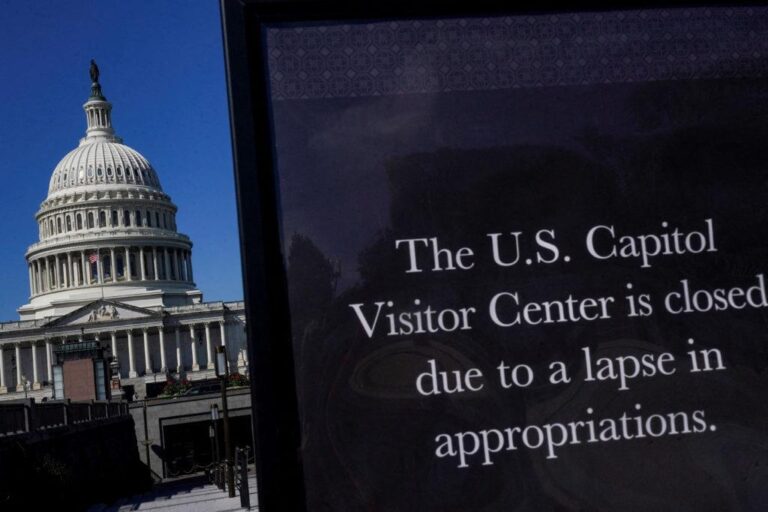Understanding the U.S. Government Shutdown: Implications and Outlook
Federal Operations Grind to a Standstill Amid Shutdown
The United States has officially entered a government shutdown, ushering in a period of significant disruption across numerous federal services. With non-essential government functions suspended, hundreds of thousands of federal workers face furloughs or unpaid labor, while critical programs experience delays or temporary suspension. This shutdown affects a broad spectrum of services, including:
- National Parks and Recreation Areas: Many parks have closed or are operating with limited staff, reducing visitor access and maintenance efforts.
- Federal Loan Processing: Applications for student loans, mortgages, and small business financing are experiencing backlogs, causing financial uncertainty for applicants.
- Public Health Initiatives: Routine health inspections and disease surveillance activities have slowed, potentially impacting community health safeguards.
Below is an overview of how key federal agencies are functioning during the shutdown:
| Agency | Current Status | Effect on Public |
|---|---|---|
| Transportation Security Administration (TSA) | Operating with limited personnel | Extended security lines at airports |
| Internal Revenue Service (IRS) | Suspended non-essential functions | Delays in tax refund processing |
| Food and Drug Administration (FDA) | Minimal operational capacity | Slower review and approval of new medications |
Economic Repercussions and Household Challenges
The shutdown’s immediate economic consequences are reverberating through American families and communities. Federal employees face income interruptions due to furloughs, while contractors and businesses dependent on government funding confront payment delays, triggering a cascade of financial strain. Essential public services, from social security disbursements to national park operations, are also compromised, affecting millions.
Households are likely to encounter:
- Postponed receipt of tax refunds and social security payments, complicating budget management
- Heightened financial stress and uncertainty around loan approvals and credit access
- Restricted availability of government assistance programs, disproportionately impacting vulnerable populations
| Affected Sector | Immediate Effects | Long-Term Risks |
|---|---|---|
| Federal Workforce | Unpaid leave and furloughs | Decreased consumer spending and economic slowdown |
| Social Welfare Programs | Benefit distribution delays | Increased hardship and poverty rates |
| Small and Medium Enterprises | Interrupted government contracts and funding | Potential long-term financial instability |
Congressional Deadlock: The Root of the Shutdown
The shutdown stems from a persistent impasse in Congress, where partisan divisions have stalled budget negotiations. Lawmakers remain polarized over spending priorities, policy riders, and legislative conditions, with little progress toward a resolution. This stalemate reflects broader ideological conflicts and the challenge of balancing diverse political agendas amid mounting public pressure.
Negotiations are further complicated by internal party factions and external lobbying influences. Congressional leaders must navigate competing demands from hardline members and constituents, making compromise elusive. Key sticking points include:
- Budgetary disputes: Conflicting views on government expenditure levels and allocations.
- Controversial policy provisions: Disagreements over attached amendments that hinder agreement.
- Political brinkmanship: Tactical maneuvers aimed at gaining leverage, escalating tensions.
| Political Group | Primary Demand | Negotiation Position |
|---|---|---|
| Democratic Party | Enhanced funding for social programs | Resistant to major concessions |
| Republican Party | Reduction in government spending | Maintaining firm stance |
| Independent Lawmakers | Greater government transparency and accountability | Advocating for bipartisan compromise |
Practical Tips for Individuals and Businesses During the Shutdown
In light of the ongoing shutdown, it is crucial for both citizens and enterprises to implement strategies that minimize disruption. Individuals should focus on essential spending, establish emergency budgets, and stay updated through official channels to understand which services remain operational. Businesses, especially those reliant on government contracts or regulatory approvals, need to adjust timelines and maintain transparent communication with employees and clients.
Key recommendations include:
- Assess financial reserves: Ensure sufficient liquidity to weather payment delays.
- Stay informed: Follow government announcements and trusted news sources for updates.
- Communicate proactively: Keep stakeholders apprised of potential impacts and changes.
- Seek alternative support: Explore non-governmental resources and partnerships.
- Develop contingency plans: Prepare operational protocols to maintain continuity amid uncertainty.
| Group | Recommended Actions | Expected Outcomes |
|---|---|---|
| Individual Citizens | Adjust budgets and monitor benefit status | Mitigate impact of delayed payments |
| Small Businesses | Communicate with workforce and revise contracts | Manage postponed government engagements |
| Large Enterprises | Implement contingency operational plans | Navigate supply chain and regulatory delays |
Looking Ahead: Navigating Uncertainty
The government shutdown casts a shadow over the nation’s economic health, public service delivery, and legislative progress. The resolution hinges on lawmakers’ ability to bridge partisan divides and reach a funding agreement. Meanwhile, federal employees, businesses, and citizens must adapt to the evolving situation and its tangible effects. Ongoing coverage will track developments and provide timely insights as the scenario unfolds.







